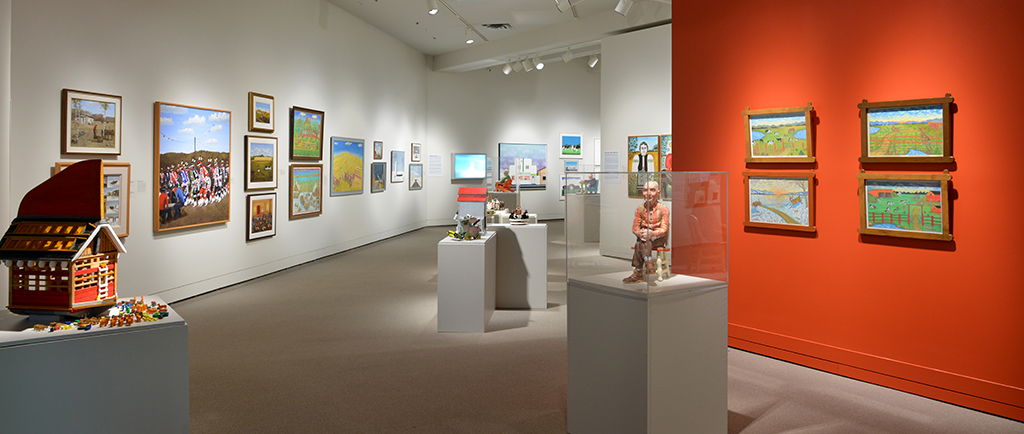A Prairie Vernacular: Folk and Contemporary Art Narratives of Life on the Canadian Prairies
Vernacular art, as we will refer to it, includes the work of artists both trained and untrained. The work refers to their local place and community, which includes the aesthetics of folk art, but also has shared context and subject matter. In the Canadian Prairies, folk art and vernacular contemporary art are linked. They share interest, environment, and sensibilities. The artists involved also share personal connections. In the 1960s and 70s, vernacular art had mainstream popularity. People liked its honesty, integrity, and raw expression. As an alternative to the New York Modernism of the 1950s, artists strove to make work that was from the Prairies and about Prairie experience. Local contemporary artists were drawn to the vernacular. Some were inspired by the humour, surrealism, and everyday subjects of California Funk. These artists began making regionally-centred contemporary art. Many of them also began working with local folk artists to mutual benefit.
This exhibition will examine the connections and influences between some of these artists. Those with folk or funk aesthetics, or that speak to the vernacular in reality, memory, myth, or vision. In the past, interest in vernacular art has often overlooked a particular issue. This genre of art has mostly represented pioneer or settler culture, the myth of the West, and white European heritage. This exhibition seeks to provide more diverse perspectives on Prairie experiences and histories. It includes the work of Indigenous artists, and research from Indigenous writers. It offers a broader view that includes Indigenous voices and experiences.
Start reading the storyMoose Jaw Museum & Art Gallery



